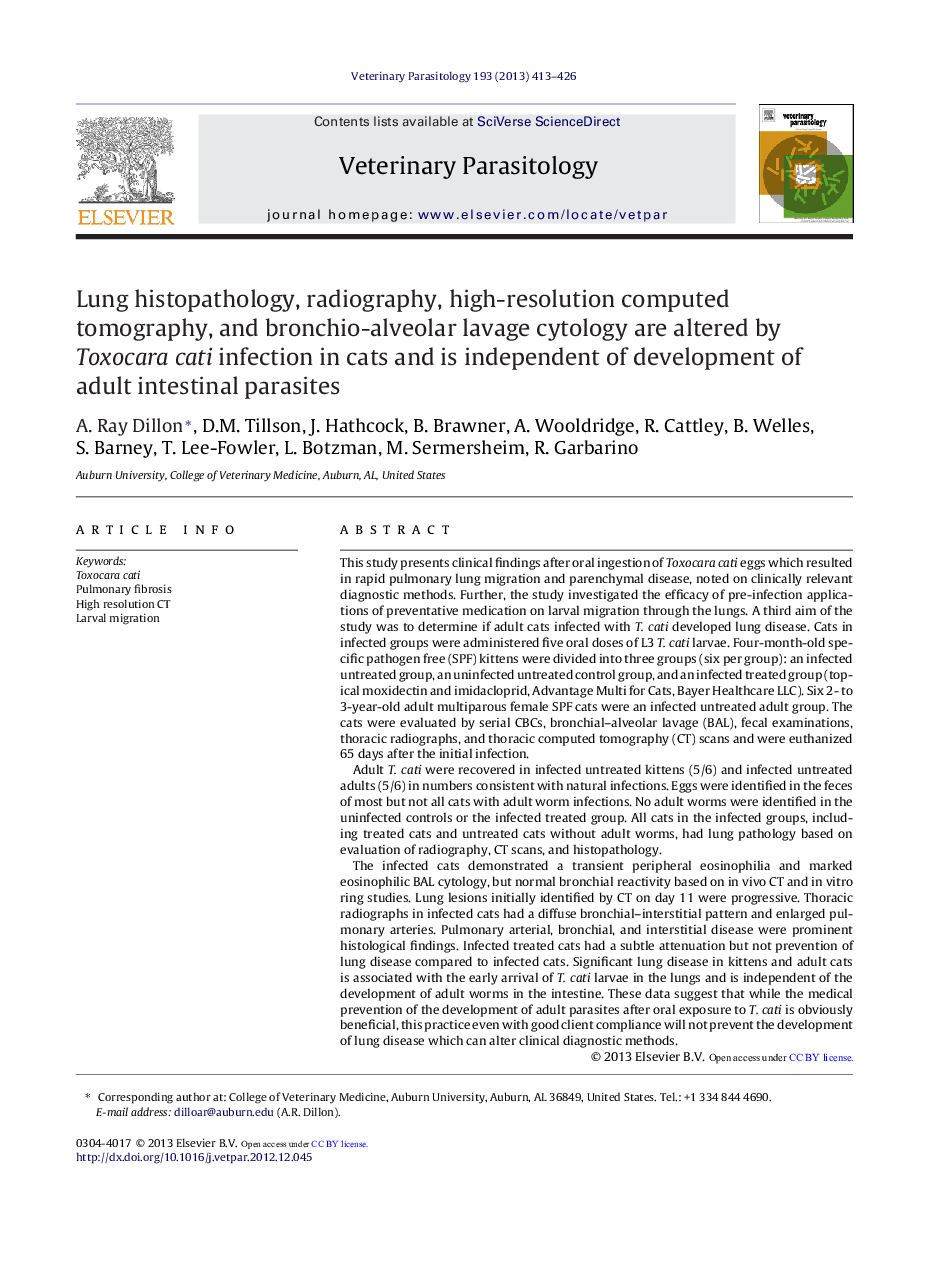| Article ID | Journal | Published Year | Pages | File Type |
|---|---|---|---|---|
| 2470047 | Veterinary Parasitology | 2013 | 14 Pages |
This study presents clinical findings after oral ingestion of Toxocara cati eggs which resulted in rapid pulmonary lung migration and parenchymal disease, noted on clinically relevant diagnostic methods. Further, the study investigated the efficacy of pre-infection applications of preventative medication on larval migration through the lungs. A third aim of the study was to determine if adult cats infected with T. cati developed lung disease. Cats in infected groups were administered five oral doses of L3 T. cati larvae. Four-month-old specific pathogen free (SPF) kittens were divided into three groups (six per group): an infected untreated group, an uninfected untreated control group, and an infected treated group (topical moxidectin and imidacloprid, Advantage Multi for Cats, Bayer Healthcare LLC). Six 2- to 3-year-old adult multiparous female SPF cats were an infected untreated adult group. The cats were evaluated by serial CBCs, bronchial–alveolar lavage (BAL), fecal examinations, thoracic radiographs, and thoracic computed tomography (CT) scans and were euthanized 65 days after the initial infection.Adult T. cati were recovered in infected untreated kittens (5/6) and infected untreated adults (5/6) in numbers consistent with natural infections. Eggs were identified in the feces of most but not all cats with adult worm infections. No adult worms were identified in the uninfected controls or the infected treated group. All cats in the infected groups, including treated cats and untreated cats without adult worms, had lung pathology based on evaluation of radiography, CT scans, and histopathology.The infected cats demonstrated a transient peripheral eosinophilia and marked eosinophilic BAL cytology, but normal bronchial reactivity based on in vivo CT and in vitro ring studies. Lung lesions initially identified by CT on day 11 were progressive. Thoracic radiographs in infected cats had a diffuse bronchial–interstitial pattern and enlarged pulmonary arteries. Pulmonary arterial, bronchial, and interstitial disease were prominent histological findings. Infected treated cats had a subtle attenuation but not prevention of lung disease compared to infected cats. Significant lung disease in kittens and adult cats is associated with the early arrival of T. cati larvae in the lungs and is independent of the development of adult worms in the intestine. These data suggest that while the medical prevention of the development of adult parasites after oral exposure to T. cati is obviously beneficial, this practice even with good client compliance will not prevent the development of lung disease which can alter clinical diagnostic methods.
